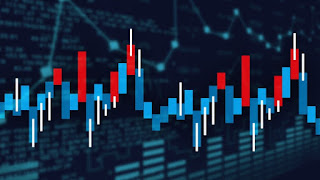Beginner Stock Trading FAQ
How Much Money Do I need to Start Trading?
$0. Yes you can trade for free, with a simulation account, but of course you won't make any money. If you do want to risk some real money you can technically start with as little as $1 with some brokers I'll talk about in the next question. With a simulation account, like I mentioned, you can trade with "fake money" aka paper trading, which is a good way to practice trading without risking any of your hard earned money.Paper Trading
There are several paper trading websites you can use to practice trading stocks for free. I recommend using TDAmeritrade's Thinkorswim system because they have a very clean layout and you can find many how-to videos on basics for using their application. Here is a link to get started:https://www.thinkorswim.com/t/index.html#!/pmregister
Real Money Trading
If you are thinking about getting started with real money, I'd recommend using a small account (under $1,000). Of course a small account means a different amount for everybody, but if you do have an account under $1,000, I would recommend using a $0 commission broker such as Robinhood or WeBull. Tradezero is also a good comission-free broker but they have a $2,500 minimum requirement. Robinhood and WeBull will save you money on commission but I would recommend solely using them for your orders and using a better platform like ThinkOrSwim for studying charts and creating scanners.***PDT RULE***
I must warn you that if you have an account under $25,000, you will be subject to the PDT Rule. This states that you can only make 3 day trades in a 5 day rolling period and if exceeded, you will be flagged as a pattern-day-trader and you will not be able to trade for 90 days. I highly encourage you to make sure you understand this before day trading. Most brokers will show how many day-trades you have left at any given time. Here is a link if you'd like to read more on it:https://www.finra.org/investors/day-trading-margin-requirements-know-rules
Is Trading Difficult?
Yes. I am almost certain that you are not a natural at trading and you will have to study intensively and really be committed to become a consistently profitable trader. I highly recommend you take this into account if you are thinking about trading with an account size that you would NOT be comfortable with completely draining. Statistically, about 90% of traders end up losing money so you need to put in the effort and really be committed to studying and improving as a trader. This is why I recommend starting with a paper trading account or a very small amount to prevent inevitable losses affecting you in this difficult stage of trading.How Do I Learn How to Trade?
Basics
There is a lot of information out there especially on YouTube on trading basics. Technical analysis is huge in trading so I would highly recommend learning about that; learning about support, resistance, and trends. Some notable people that helped me in this process are Tim Sykes, Tim Grittani, Roland Wolf, and Nathan Michaud. There are also countless others that you will probably come across since the stock-trading community is pretty tight-knit. There is a lot of free content to learn from but if you'd like to join a paid training program, Tim Sykes and Nathan Michaud also offer this as well as some great training DVD's. These can get a bit pricey, but if you are serious about trading, they are well worth it.Improving
Once you get the basics down, you'll probably realize that all the advice you hear is much easier said than done. You'll probably hit a stage of frustration where you think you know how to trade but you end up still losing. Trading is a very psychological battle and this is where I think those 90% of failed traders fall short. Once you start learning about the psychology of trading, you will be able to better apply your strategies on the market to become a profitable trader. This was the pivot point in my trading career and I would like to share these sources that got me there:- The Daily Trading Coach, by Brett Steenbarger
- One Good Trade, by Mike Bellafiore
- Trading in the Zone, by mark Douglas
- Momo Traders, by Brady Dahl
- The Steady Trade Podcast (Super Entertaining, and available on Apple Music and Spotify Podcast)
- Other habit building books like The Power of Habit by Charles Duhigg and Atomic Habits by James Clear.
Which Stocks Should I Trade?
There are a lot of different styles of trading such as day trading, swing trading, and long-term Investing. There's not one "best way to trade" and each style looks for different kinds of stocks. In general, day traders look for stocks usually under $10 that are moving at least 20% on the day so looking at the Top Gainers will give you a good idea. Swing trading and long-term investing usually require a little more searching for the right stocks that have potential to run for several days. Most of the traders I listed in the "How Do I Learn How to Trade" section have some videos on swing trades. It really is up to you to learn what kind of stocks you prefer trading and what strategy works best for you.Follow @TwitterDev




Comments
Post a Comment